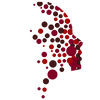Following a laryngectomy, the sense of smell, or olfaction, remains intact. In a standard laryngectomy surgery, there is no impact from the surgery to the nerves of olfaction that allow for smelling scents, aromas and odors. What has changed, however, is the pathway of airflow during respiration. Prior to the laryngectomy, air would flow into the body through the nose and mouth. This movement of air through the nose allowed for scents and aromas to be detected as the smells came in contact with the tiny nerve endings in the nose that are responsible for the sense of smell.
Following a laryngectomy, however, there is no longer an active flow of air through the nose during breathing. This can be perceived as a loss of smell.
Following a laryngectomy, however, there is no longer an active flow of air through the nose during breathing. This can be perceived as a loss of smell.
Polite yawn technique
The “polite yawn technique” has become a standard in helping laryngectomees regain their capacity to smell. The SLP staff is very good in helping patients to master this technique although home exercise and regular practice is key.
With this technique, you create a vacuum within the upper airway. This serves to draw air into the nasal passages and by doing this, the sense of smell is then enhanced with the new airflow.
It is known as the “polite yawn” technique because the movements involved are similar to those when you attempt to yawn with a closed mouth. Swift, downward movement of the lower jaw and tongue, while keeping the lips closed, will create a subtle vacuum, drawing air into the nasal passages.
With practice, you will be able to achieve the same vacuum using more subtle (but effective) tongue movements. The SLP staff can be very helpful in providing training of this technique.
Instructions on how to make your own manometer as shown on the movie can be downloaded from here.
|
|
|
Courtesy of the Netherlands Cancer Institute, Amsterdam
http://www.hoofdhals.nki.nl/olfaction/Start.aspx
http://www.hoofdhals.nki.nl/olfaction/Start.aspx

